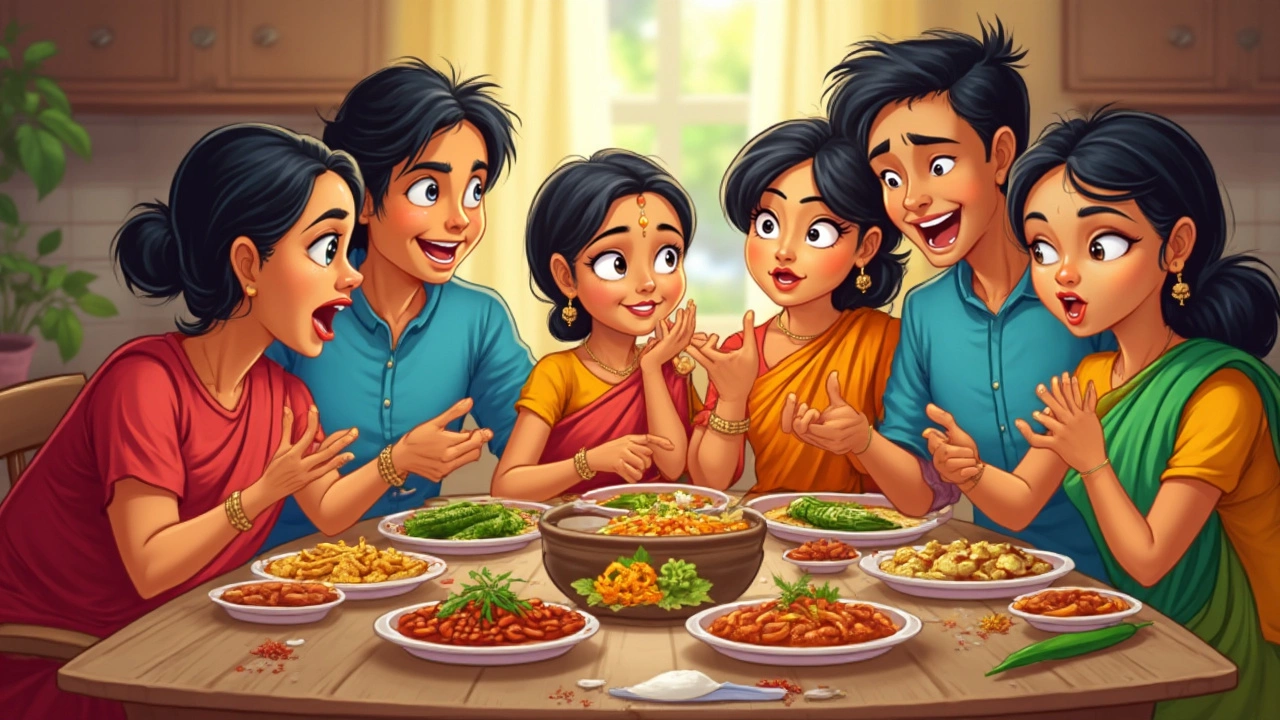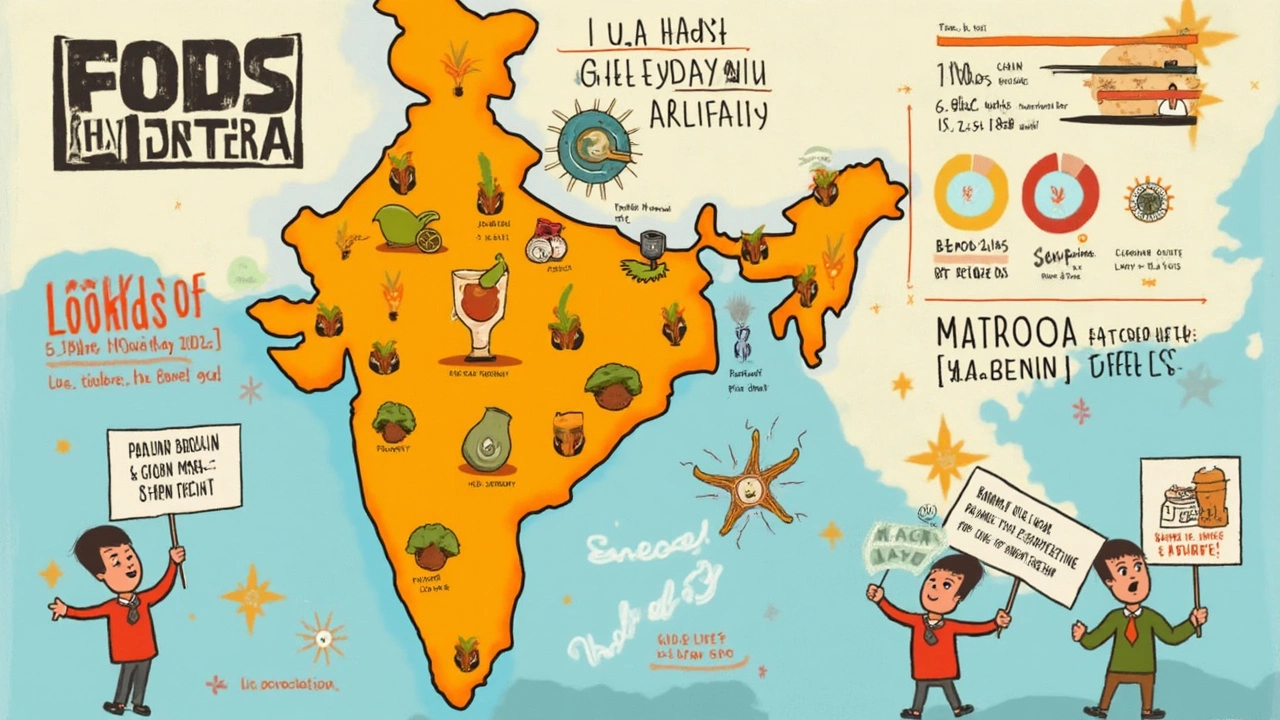India’s Most Unpopular Foods: Dishes That Divide the Nation
 Jun, 30 2025
Jun, 30 2025
Heard the joke about someone refusing to eat bitter gourd even at gunpoint? Well, in India that’s not really a joke—ask around and you’ll meet plenty who would rather fast than fork up a helping. Now, here’s the wild thing: a country that can fall in love with fiery pickles, stinky seafood, or desserts dripping with syrup can also be shockingly picky about certain foods. Want to know what foods most Indians would diplomatically nudge to the edge of their plates, and sometimes straight into the trash? Things really heat up once the conversation starts!
Bitter Enemies: The Curious Case of Bitter Gourd and Beyond
Bitter gourd, locally known as karela, is infamous across India. If you ever time-travelled to a North Indian family lunch in the ‘90s, you’d hear parents threatening kids with ‘karela for dinner’ as a last resort. Why? The bitterness isn’t subtle. Even grown adults, with years of taste-bud training, still cringe at the first bite. It’s not like people haven’t tried; some recipes toss it in so much spice and jaggery that it’s practically in disguise. But somehow, that distinctive bitter punch always slips through.
Not to pile on karela, but the Indian food blacklist doesn’t stop there. Another classic culprit is tori, or ridge gourd. Soft, slimy, and almost impossible to make exciting, it’s one of those vegetables that gets a unanimous groan, especially in school tiffins. And then there’s lauki, or bottle gourd—famous for its blandness. Grandmas might tout its ‘cooling effects,’ but kids across the nation would swap lauki sabzi for a plate of fries any day.
The list expands when you look at some regional oddballs. In the coastal states, fermented fish (shidol in the Northeast, or bombil in Maharashtra) makes the cut. Its intense smell can clear a room. Even loyal locals admit it’s an acquired taste that takes practice...and a plugged nose. If you bump into a dinner party in Kerala, you’ll find those not-so-keen on jackfruit stir-fry—yes, even when it’s brilliantly cooked, the jackfruit’s intense aroma and fibrous texture divide families. Still, every unpopular food has a fan club. For every group that can’t stand bitter gourd, there’s that one uncle swearing by its health powers and ‘unique’ taste.
| Unpopular Food | Region of Prevalence | Common Complaints |
|---|---|---|
| Karela (Bitter Gourd) | All over India | Extreme bitterness |
| Tori (Ridge Gourd) | North India | Lack of flavor, slimy texture |
| Lauki (Bottle Gourd) | All over India | Bland, watery, boring |
| Shidol (Fermented Fish) | North-East India | Strong smell, acquired taste |
| Jackfruit (Raw/Unripe) | Kerala, West Bengal | Pungent aroma, odd texture |
Still, the top spot for unpopular foods in India is a hotly contested seat, and the winner often depends on who you ask and where their grandparents are from.
Why Are They Hated? Science, Memory, and the Power of Peer Pressure
It’s tempting to think these foods are hated just because of taste, but there’s a little more at play. There’s actual science behind why some foods instantly make us turn up our noses. The human tongue has about 8,000 taste buds, and bitterness is a warning sign, thanks to ancient survival instincts—our ancestors avoided bitter plants because they were often poisonous. Karela and neem leaves? Double trouble for picky eaters!
But taste isn’t the only culprit. Memories stick harder when they’re tied to food. Studies show if your first experience with a food was yucky—like a cold, soggy karela sabzi in school tiffin—you'll associate that food with misery for a lifetime. Food trauma, anyone? Then comes peer pressure. Imagine a classroom, lunchboxes open, and a collective groan at the smell of boiled lauki. You’re not risking social suicide chomping down, right? Kids develop habits based on their friends’ reactions, and some veggies never recover.
Family traditions can surprise you too. Some households treat bitter gourd like a sacred treasure, while others act like it’s a curse. One 2020 survey across ten Indian states found that 57% of respondents disliked karela, closely followed by tori and lauki. Lest you think veggies take all the heat, some protein dishes also fall out of favor. In many urban zones, offals (organ meats), brains, and liver get a hard pass for their ‘texture’ and ‘smell.’ What’s even more interesting is regional differences. In Odisha, pakhala bhata (fermented rice with water) has diehard fans during sweltering summers, but visitors sometimes struggle with its tart, sourness. Despite this, locals swear by it as their comfort food.
The science, nostalgia, and social vibes build a powerful food memory bank. What’s reviled in one household could be comfort food in another. And behind every refused plate, there’s likely a dramatic story from childhood—or a determined grandma with a recipe she swears will change your mind.

The Flip Side: Nutrition, Comebacks, and How the Food World Changes
Here’s a crazy plot twist—bitter gourd, tori, and lauki are all nutritional superheroes. Karela is packed with vitamins C and A, plus it helps regulate blood sugar—there’s legit research showing its effects on diabetes management. Bottle gourd is 92% water and loaded with potassium, making it a summer lifesaver. Ridge gourd keeps your vitamin A up and is kind to guts. The irony? The foods that make us groan are often the ones our bodies crave the most.
The health-wellness wave is bringing these ‘unloved’ foods back. A bunch of influencers and dieticians—especially on Instagram and YouTube—now post creative karela recipes that go viral and earn lots of likes. We’re talking karela chips, trendy lauki smoothies, even bitter gourd tacos! Sometimes all it takes is one chef’s reinvention to turn a ‘nope’ into a ‘maybe’ (and occasionally a ‘yes’). Urban organic grocery stores now boast entire sections of ‘forgotten vegetables,’ riding the retro bandwagon.
Food fads swing like a pendulum—what's despised today might be tomorrow’s top health trend. People who once avoided ridge gourd now hunt it down for their detox diets. The lesson? Taste buds can adapt, and creativity in the kitchen can rescue even the most hated food from obscurity. Plus, there’s a bit of pride in eating what others can’t—kind of like being in a secret club.
How to Make the Unpopular...Popular? Survival Tips and Fast Fixes
If you’re staring down a plate of lauki or wrestling with a pile of karela, don’t despair. There are tricks, and the Internet is overflowing with hacks to tame challenging flavors. Here’s the basic strategy: mask the bitterness with strong flavors or balance it with complementary ingredients.
- Try marinating bitter gourd slices in salt for 30 minutes, then squeezing out the juice before cooking. Bitter punch = gone (well, almost gone).
- Spices work magic. Cooks swear by garam masala, chili powder, and a sprinkle of sugar or jaggery to round off harsh notes.
- Stuffing is not just for potatoes. Karela stuffed with spicy potatoes or paneer can win over even die-hards.
- Dress up lauki with tomato gravy, fresh coriander, and a dollop of ghee—trust me; it works wonders.
- If fermented, pungent foods scare you, pair them with mild sides like plain rice or soft dal to soften the flavor hit.
For the truly adventurous, challenge your friends to a ‘worst food’ cook-off. You’ll be shocked at what clever hands (and desperate taste buds) can achieve. If all fails, just remember: every culture has its own line-up of foods that split the vote. What’s weird to one person might be nostalgia on a plate for another. Just give those unpopular dishes a shot; you might unlock a new favorite—or at least earn some bragging rights!
